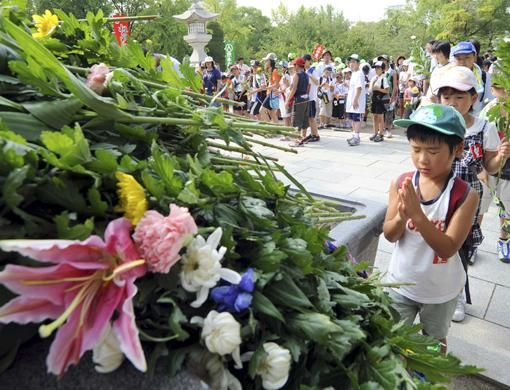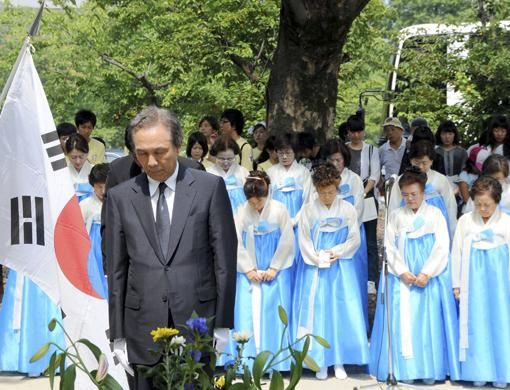Little Boy weighed only 60kg. But it was the world's most fatal weapon at this time - the first atomic bomb ever used in warfare. As US bomber Enola Gay reached the airspace nearly 10,000 metres above the southern Japanese town of Hiroshima at 8.15 in the morning of August 6, 1945, those 60kg of steel and uranium-based explosives tumbled from the belly of the aircraft straight down to earth. Another 57 seconds later, Little Boy detonated 600 metres above the city and released all of its enormous, deadly power.
The sky was lit up with a terrible flash. It took less than a second to destroy almost everything - buildings, people, animals, plants - within a radius of 1.5km.
Fires broke out across an area of more than 11 sqkm. More than 90 per cent of the city was literally razed to the ground and covered with nuclear ash. About 70,000 residents of Hiroshima died on the spot. Three days later, on August 9, 1945, a second atomic bomb, named Fat Man, exploded over Nagasaki, killing about 40,000 as a direct result.
"If Dante had been on the plane with us, he would have been terrified," Enola Gay pilot Paul Tibbet was quoted as saying after the Hiroshima blast, as he referred to medieval Italian poet Dante Alighieri and his allegoric hell, Inferno.
Co-pilot Robert Lewis simply scribbled "My God" in his flight log. Tibbet, who died in 2007, by the way never expressed any regret over his role as the nuke bomber pilot. But not all of the Enola Gay's staff had Tibbet's nerves of steel in the years after the blast. US Air Force pilot Claude Eatherly, who supported the Hiroshima mission in a separate aircraft, claimed he has been horrified from helping willfully extinguishing ten thousand of lives at the single drop of a bomb. He started to write letters of apology and later launched a correspondence with Viennese philosopher and pacifist Günther Anders. Eatherly died in 1978 after being treated for schizophrenia and pathological anxiety in an Army Veterans' hospital.
Maybe he read what survivors had to say. Taeko Teramae was 15 years old and worked in the central Hiroshima telephone office when Little Boy lit the sky. "The flash exploded right in front of my eyes," she told researchers at the Hiroshima Peace Cultural Centre, who are collecting interviews with eye-witnesses of the August 6, 1945 disaster even more than 60 years after. "There was a tremendous noise when all the buildings around me collapsed. After I got better, I found a piece of mirror and looked into it. I was so surprised I found my left eye looked just like a pomegranate."
However, 63 years later, Hiroshima presents itself as a bustling city of 1.2 million, full of shopping centres and industries. Surprisingly enough, about 20 per cent of the city's electrical power today originates from a nuclear power plant.
Vaporised in a burst of light
The Hiroshima bombing was the second manmade nuclear explosion in history following the "Trinity Test" on July 16, 1945 in the US desert of New Mexico.
Hiroshima literally was a test target for the atomic bomb, as it was spared conventional bombing during the war with Japan to observe the effects a nuclear bombing has on a non-damaged town.
The fireball of the bomb was some 400 metres in diameter. Everything inside this radius, including humans, was instantly vaporised or burst into flames.
The bomb was developed by the Manhattan project led by physicist Robert Oppenheimer since 1939 at a cost of $2 billion (Dh7.34 billion).
By the end of 1945, the death toll of the Hiroshima bombing reached 100,000, five years later a total of 200,000 have died as a result, according to official US figures. Six days after the bombing of Nagasaki, on August 15, 1945, Japan announced its surrender as then US president Harry Truman threatened to drop more atomic bombs.
Have you ever visited the bomb sites? Or do you know anyone who survived the Second World War? How do you think the incident has helped the nuclear non-proliferation movement? Tell us at letter2editor@gulfnews.com or fill in the form bellow to send your comments.















